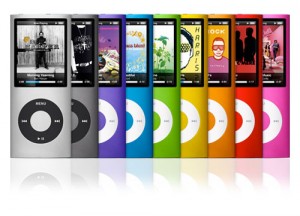Apple Inc. (NASDAQ:AAPL) exists today largely because of the iPod. The portable music player proved to be the breakthrough success that saved the Cupertino firm from bankruptcy and disintegration in 2001, along with the revolutionary iTunes. The player’s hard disc storage was innovative at the time, and the device was purchased avidly. By the end of 2002, 600,000 of iPods had been sold. This figure skyrocketed to 2 million in total a year later, 10 million at the end of 2004, 42 million by 2005’s end, and 89 million by December 31st, 2006.
Sales dropped after the iPhone was introduced, and analysts began to regularly predict the iPod would be struck from the Apple Inc. (AAPL) product list. These rumors have persisted up to the current time, with definitive statements regularly issued and invariably disproven by events. One of the most recent declared that iPods would be gone by September 10th, 2013. Six months later, the iPod is still available in all its variants on the Apple Store, including the Shuffle, Nano, Touch, and Classic.

The iPod’s 160 gigabytes of storage far outstrips the best that iPhones have to offer – and the music and other media stored on it are available even when establishing contact with “the cloud” is impossible. An iPod can be used to listen to music in places where no Wi-Fi connection is available, and needs no contract with a telecommunications company in order to function. Once files are synced onto the iPod, they are available for listening or viewing at any time, anywhere.
Various iPod models are also far cheaper than iPhones or iPads, and work without any additional contracts or purchases. They are thus excellent introductory products which can lure new customers into their first Apple purchase. An iPod Shuffle costs $49 for 2 gigabytes of storage, and an iPod Nano holds 16 gigabytes for $149, compared to the 8 gigabytes capacity of the cheapest iPhone 5C, which costs more than $700 if purchased unsubsidized. The iPod range are tempting entry-level items for music enthusiasts, who may then be impressed enough to try other Apple (AAPL) products in the future.
The iPod, in short, fulfills a role that no other Apple item can currently precisely match. It provides high offline media storage and replay capacity at a very low price. Additionally, its universal appeal as a mobile music player lures in new customers who do not own any other Apple device yet. Until another item is created that can emulate these advantages, the iPod seems likely to continue as one of Apple’s available products – low-key, perhaps, but extremely useful to the company nevertheless.




